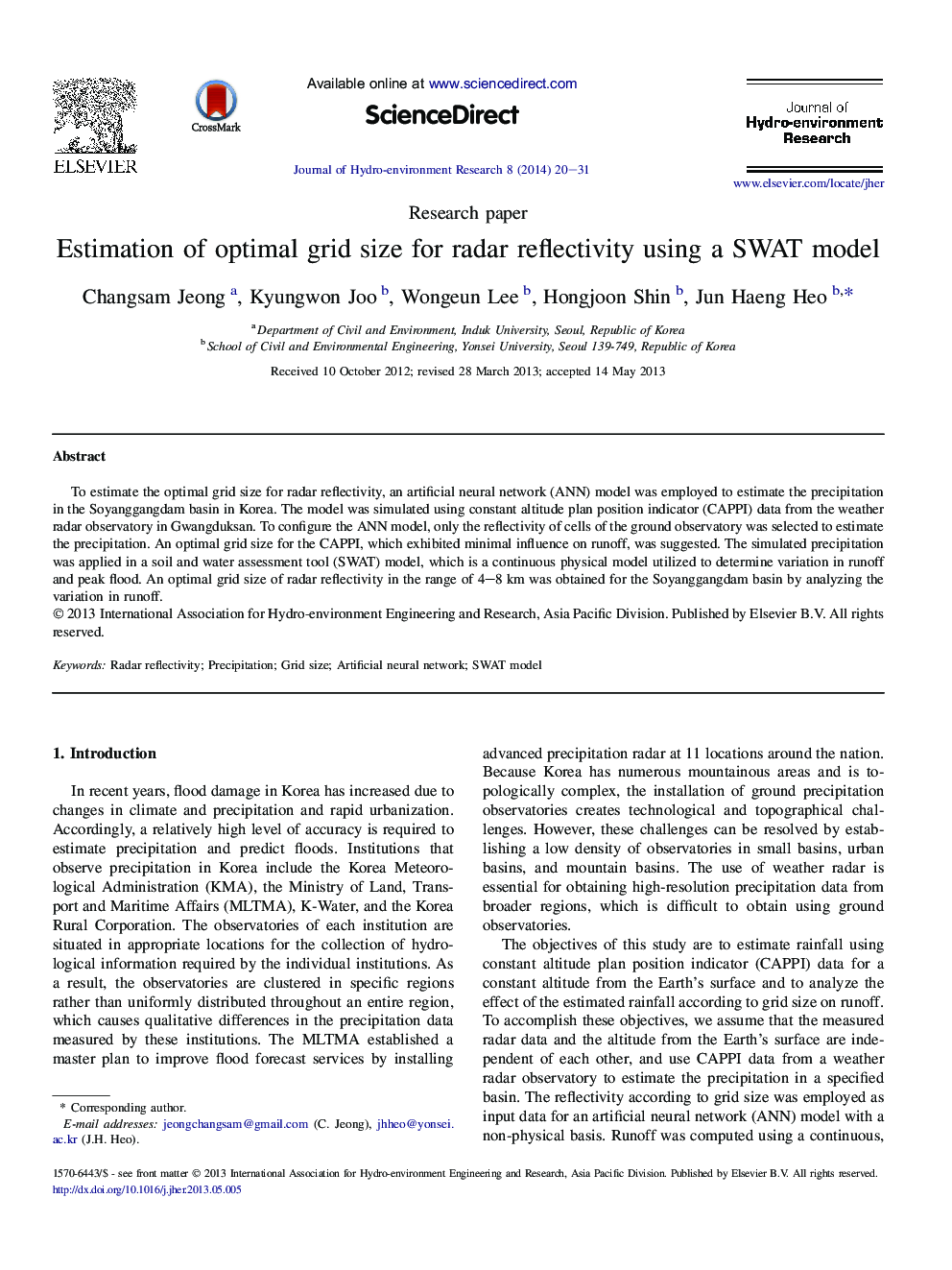| Article ID | Journal | Published Year | Pages | File Type |
|---|---|---|---|---|
| 4493798 | Journal of Hydro-environment Research | 2014 | 12 Pages |
Abstract
To estimate the optimal grid size for radar reflectivity, an artificial neural network (ANN) model was employed to estimate the precipitation in the Soyanggangdam basin in Korea. The model was simulated using constant altitude plan position indicator (CAPPI) data from the weather radar observatory in Gwangduksan. To configure the ANN model, only the reflectivity of cells of the ground observatory was selected to estimate the precipitation. An optimal grid size for the CAPPI, which exhibited minimal influence on runoff, was suggested. The simulated precipitation was applied in a soil and water assessment tool (SWAT) model, which is a continuous physical model utilized to determine variation in runoff and peak flood. An optimal grid size of radar reflectivity in the range of 4-8Â km was obtained for the Soyanggangdam basin by analyzing the variation in runoff.
Related Topics
Life Sciences
Agricultural and Biological Sciences
Agricultural and Biological Sciences (General)
Authors
Changsam Jeong, Kyungwon Joo, Wongeun Lee, Hongjoon Shin, Jun-Haeng Heo,
